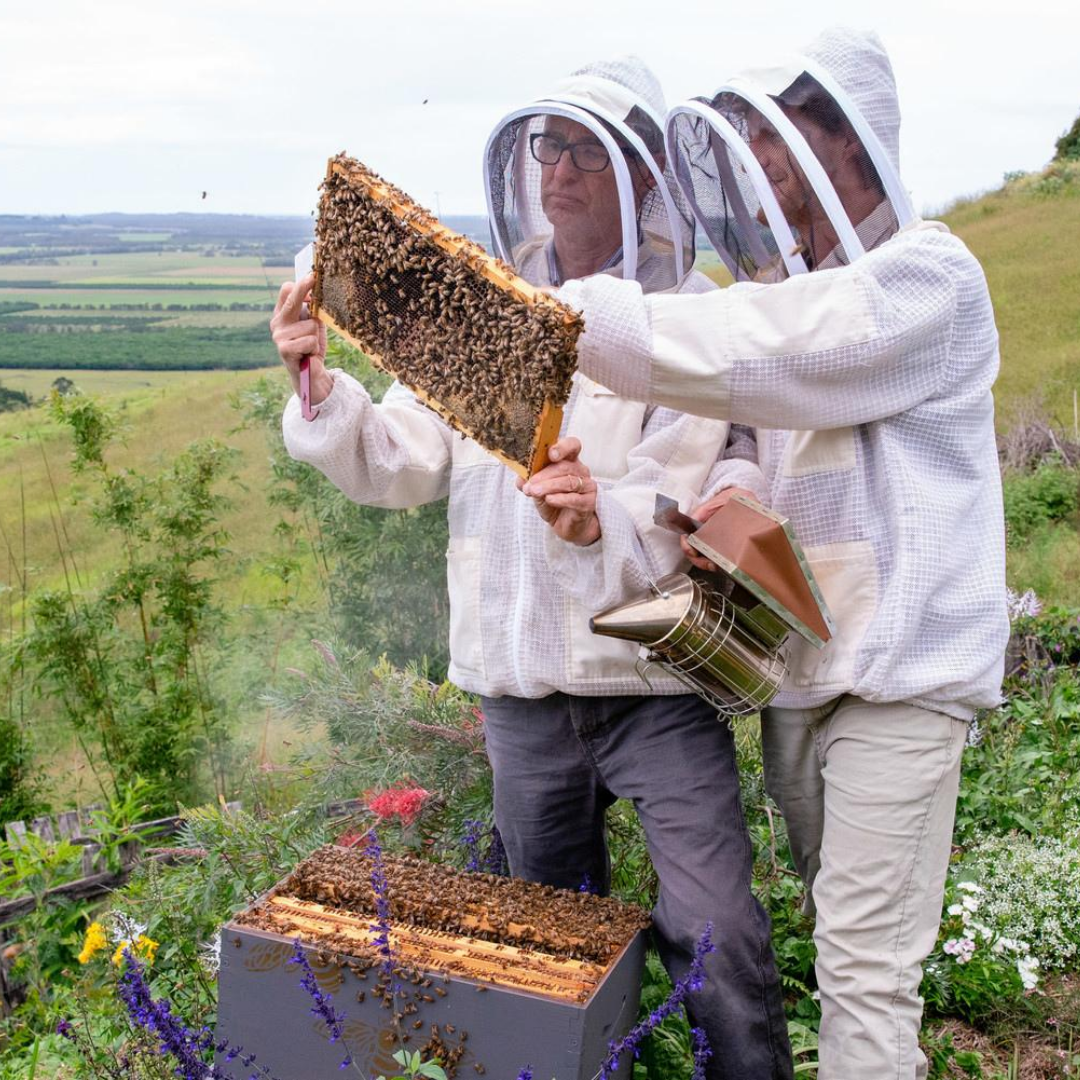Your Cart is Empty
How to keep ants out of your hive
by Flow Hive 3 min read
Ants can be a nuisance in beehives. Most ants won’t harm honey bees, they are more of an inconvenience. We’ve got some tips on keeping your hive free from ants.
- Why ants are attracted to beehives
- When ants are a problem in beehives
- How to remove ants from a beehive
- How to deter ants from your beehive
Why ants are attracted to beehives
Ants are attracted to beehives as a source of food, warmth, and shelter. They may even start a nest and lay eggs in the hive. Primarily, they are attracted by the smell of honey from the hive.
The Flow Hive 2+ with Flow Ant GuardTM protecting the hive from ant invaders.
When ants are a problem in beehives
A healthy honeybee colony can usually defend itself easily from ant intruders. The bees can remove most of the ants from the hive and are not badly affected. Ants may remain in parts of the hive that the bees can’t access.
A weak colony, or a smaller colony, such as a newly captured swarm may not have sufficient bee numbers to defend itself against ants. An ant invasion could worsen existing problems in a failing colony and speed up its demise.
Some species of ants can be very harmful to honeybee colonies. Argentine ants can overwhelm a colony, taking food stores and brood from the hive, often causing colonies to abscond. Beekeepers in areas with these ants present need to be extra vigilant.

How to remove ants from a beehive
Removing ants from the hive will usually be a quick and simple job. If you find ants in your hive, simply remove them with a bee brush, or use your hive tool or some foliage. Check under the roof and inner cover, and in crevasses that the bees can’t easily access.
How to deter ants from a beehive
Once you have removed the ants from the hive, the important thing is to stop them from easily accessing the hive again. Ants can be persistent, so you may need to repeat these actions a few times.
- Keep your hive clean – clean up any honey that gets spilt when harvesting. If you have a Flow Hive, remove the honey trough cap and, if necessary, clean the leak-back gap with a thin tool such as a kitchen skewer or wire to allow the honey to drain back into the hive.
- Cinnamon powder is said to deter ants, you can sprinkle it in the corners of your brood box and super, and behind the windows if you have a Flow Hive.
- Keep your hive on a stand – the hive should be elevated. Use the adjustable hive stand if you have a Flow Hive 2 or 2+.
-
Create a barrier to prevent the ants from easily accessing the hive. If you have a Flow Hive 2+, use the Flow Ant GuardTM. Fill the caps with Vaseline or vegetable oil and adjust the cover, depending on the size of the ants you’re dealing with. You can also purchase Flow Ant GuardTM separately for the Flow Hive 2.
Adjustable hive stand legs featuring Flow Ant GuardTM.
- If you don’t have Flow Ant GuardTM, place the legs of your hive stand in small containers, such as the end of plastic bottles. Add a barrier substance, such as diatomaceous earth, vegetable oil, cinnamon powder of grease to the containers. Check them for refills when necessary.
-
Remove any foliage touching the hive, as the ants will simply use this as a bridge to bypass your barrier.
For more information on how to deal with beekeeping pests, check out TheBeekeeper.org. This online course features the world’s beekeeping experts and covers everything you need to know to take excellent care of your bees.
Also in Beekeeping Basics

How to Conduct Brood Inspections
by Flow Admin 5 min read
Brood inspections are an incredibly important part of beekeeping – if not the most important part!





